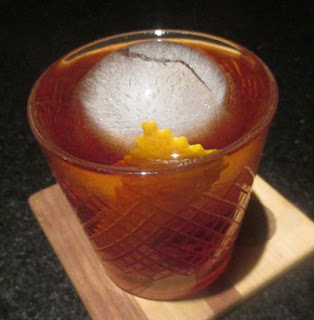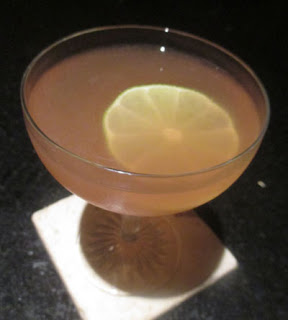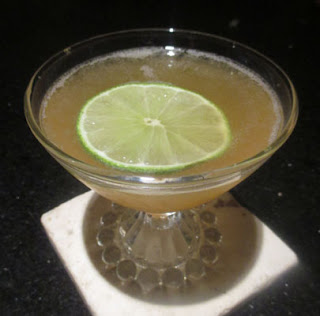First published on the USBG National site in December 2017 and slightly edited here to reflect time change.
When it comes time to look for a new gig, there are plenty of opportunities to fill a spot on an existing bar's roster, but there are occasionally chances to help to open a new bar program. Is it worth going through the challenge of forming new systems or is it easier to jump in for someone else departing in a more developed establishment? These are some of the things that I pondered before I made a move to open another restaurant's bar some time ago.
One of the perks of joining an existing program is that the staff can teach you the way things are done there, and after that training week or so, you can get right into the swing of earning a living from the regulars and the crowds that have already been built up. For less experienced bartenders, learning from the veteran staff is a great way to get oriented on how to do your job. And for less opinionated or more flexible bartenders, adopting their systems without complaint or input is just part of getting situated in the job.
In opening a new spot, often there are few systems firmly in place, but the bar manager or lead bartender will have ideas on how things should work. Sometimes the ideas match the space and other constraints, but sometimes aspects need to be figured out during the training period and adapted after open. Some leaders are very open to letting the other bartenders have great say in how things should be done and thus decide by consensus, while other leaders feel that it is their right to exert their system to begin with and adapt from there. This can range from house recipe specs to how the wells should be set up. Regardless, rules and standards will be in flux from dress code to comp policies, and sometimes you are alerted to these midway through your evening's shift.
Opening a place also takes a decent sense of humor and humility. Often recipes and processes will change on nights that you are not working and frequently the communication system to alert everyone is not in place. If you are into firm rules and boundaries, these rapid and poorly announced alterations can be jarring especially if delivered with the wrong tone. In addition, expectation for things like closing protocols can be written on paper, but following those to another's judgment when they arrive the next day can be very different.
There are two major problems financially with opening a new bar. The first comes with the open date. Very few places open when they think they will due to construction, city inspections, or other. Unlike joining an established program, the start time for training and opening are not fixed. If you are between jobs, that can mean an extended and indeterminate amount of unemployment (followed by underemployment since most places pay minimum wage for the training hours and sometimes training can drag an extra week or so past the standard expected two weeks). If you are in a position and looking to switch, that can mean playing a waiting game as a sleeper cell; unless of course you are honest and open about your plans to move on with your employer and do not fear them letting you go as soon as they hear that you are not 100% committed to their establishment.
The second financial consideration is earning potential. As mentioned above, the time waiting for training to begin and for the opening night can cost a bit in lost earnings. Following that, building up the guest traffic can be variable. Some places have such a buzz that they gain crowds from the open and continue on through. But in some restaurants, the opening week or two are filled with foodie tourists who are looking to check off that new box and most rarely return. Other spaces start slowly whether being in a developing neighborhood or due to a lack of public relations buzz being built up. Getting the right guests who agree with what you are offering to come in and you providing the right service, food, and drink to get them so that they return is a long haul process. Having some money saved up for this wage gap is necessary; some bartenders will keep a few shifts at their old bar and have fewer days off to tide them over in the meanwhile.
There are also differences in choosing your coworkers. In an established bar, you can sort out the dynamics while staging and quickly discern if there are some trouble spots on the roster. When opening a place, frequently there are only a few pieces in place when you accept, so perhaps you might know the bar and general managers, but the rest are a mystery. And once you gather together, often some percentage will drop out and some will enter into the equation starting in the middle of training and going into the first few weeks of service. If a manager hired well with both personality and talent in mind, there is a chance that a team can gel together rather quickly. Moreover, it is easier for a new hire to carve out their role in the team when it is forming than in joining one that has already hit their stride.
It can also take a bit of time to get the bar firing on all cylinders. Often there is a bit of over-staffing to make up for the inefficiencies of the start up effort. This can lead to frustration of money being split too many ways that can be compounded by other problems such as figuring out where things live (or where they moved to in that rearrangement that happened when you were not there).
When it comes time for a change, it is a good idea to weigh out all the options. New places can come with promises of tip and sales expectations or program greatness, but these are never set in stone. Joining an established program is less risky of a venture, but it can take a lot longer to make an imprint on how the bar functions. In the end, picking a new gig is a lot like dating. There has to be a mutual acceptance of the program and the worker, but after that, it is still a roll of the dice. It can be exciting to see who your regulars will be; although you can pick your food and drink offerings, the guests who return chose you. While you can escape that crazy regular and mourn your kind and generous ones at your last bar, you will find out what develops over time as to who will fill those two roles in the new location. Moreover, opening a new place can give you great insight into various bar programs’ philosophies and techniques as people are often really open to discussing how things were be done in their old spots. While there can be a lot of pleasure in opening a new spot, there is generally a lot of discomfort (both financial or psychological) involved: it is a lot like childbirth where new moms swear off of having another kid, but many return to it with renewed optimism over time.












 1 oz Krogstad Aquavit
1 oz Krogstad Aquavit













 2 oz Plantation OFTD Overproof Rum
2 oz Plantation OFTD Overproof Rum


 The 2017 collection of 855 drink recipes, bartender tributes, and essays on hospitality from CocktailVirgin's Frederic Yarm. Available at
The 2017 collection of 855 drink recipes, bartender tributes, and essays on hospitality from CocktailVirgin's Frederic Yarm. Available at  The 2012 collection of 505 drink recipes, techniques, and Boston bar recommendations from Frederic Yarm. Available at
The 2012 collection of 505 drink recipes, techniques, and Boston bar recommendations from Frederic Yarm. Available at 




